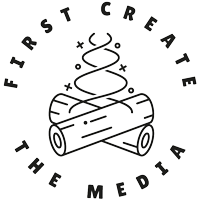Running a startup in the life sciences, biotech or health tech? Here’s why you need to get your story straight, right from day one.
You’ve got your idea, your leadership team, and your business plan. But do you have your story?
Today’s science start-ups are working in an increasingly competitive landscape. Telling your story and explaining your science in a clear, compelling and memorable way can help you stand out from the crowd.
While it may be tempting to file all of this stuff under ‘marketing’ and get round to it later in your company’s journey, it’s never too early to start thinking about creating and communicating clear messages about what you’re doing and why it’s important.
Whether it’s creating an investor pitch that sticks, attracting potential partners, maintaining stakeholder relations, attracting media attention, or bringing in the right kind of talent, having a strong story and messaging is an essential component for success.
What do we mean by a story?
What pops into your head when you hear the word ‘story’?
Maybe you think of a work of fiction, like a novel, film or TV show. Or maybe you go even further back to the tales you heard as a child, sitting attentively on the floor for story-time.
The concept of storytelling in science often gets a bad rap, often being mistaken for spinning a yarn about someone’s imaginary Auntie or simply making stuff up.
What I’m talking about here is a more functional definition of a story: sharing your message using a structured narrative. It’s something that sounds simple, but is easy to forget to put into practice.
Every good story has a beginning, a middle and an end. It’s a format that makes sense to people and stops us from jumping around from topic to topic, which can be distracting and confusing.
(While there are clever ways to play with this linear structure, as exemplified by the film Memento, we don’t recommend writing your talks or articles backwards unless you’re a master storyteller!)
So in principle, it’s easy to write a story: start at the beginning, go through the middle and get to the end.
But how can you shape information about your company or your science into a narrative without it feeling forced or awkward?
One good place to start is with a format that’s probably familiar to all of us: fairy tales.
Are you sitting comfortably? Then we’ll begin
One of the most powerful tools that we use in First Create The Media’s science storytelling workshops is a big box of classic Ladybird fairy stories.
All my childhood favourites are in there, from Sleeping Beauty to Rapunzel, Puss in Boots and the Princess and the Frog.
I always love seeing the joy on our participants’ faces as we ask them to read the books out to each other, whether they’re familiar with the story or not.
Next, we get them to break down the tales into narrative components such as structure, plot, characters and emotions. (I’ll cover these other components in future posts.)
Although your science story may not involve evil trolls, witches or talking frogs – although CRISPR technology is coming along fast… – the simple structure of a fairy tale is a useful narrative template.
Beginning: Once upon a time…
This is where you set the scene. What’s the problem you’re trying to tackle? What’s the setting, and where are you starting out from? What’s the world like in which you’re operating and who are the main characters in the story? Now is the time to introduce them.
Middle: But then one day…
This is where the action happens – the bit where everything changes. Here’s where you can talk about the work you’re doing and what you’ve discovered so far. Maybe it’s an event, discovery or meeting that triggered a vital shift forwards. Or perhaps you realised how to do something differently that nobody else had spotted.
End: Then they all lived happily ever after…
So what happens next? Where do we go from here? What does the future look like if you can get this to work? You might not be there yet, but you can use your imagination.
The important thing to remember is that you are the storyteller.
You control where your story starts, who gets to be in it, what happens and how it ends. You don’t have to include every single detail. You can leave things out or make certain events more prominent.
For two great examples of sticky start-up stories, check out these ones we wrote for our clients Global Gene Corp and ZOE.
Need some help telling your story?
If you want to get your startup’s story straight, First Create The Media can help. We work with founders and leadership teams in the life sciences to uncover, construct and communicate your company’s stories, values, and key messages.
We also run half-day workshops for leaders of companies located in science parks, accelerators and innovation hubs, covering the basics of narrative-based communication and messaging together with lots of opportunities for participants to work on their own stories.
Get in touch to find out more or to book a workshop.
Image licensed from Envato

